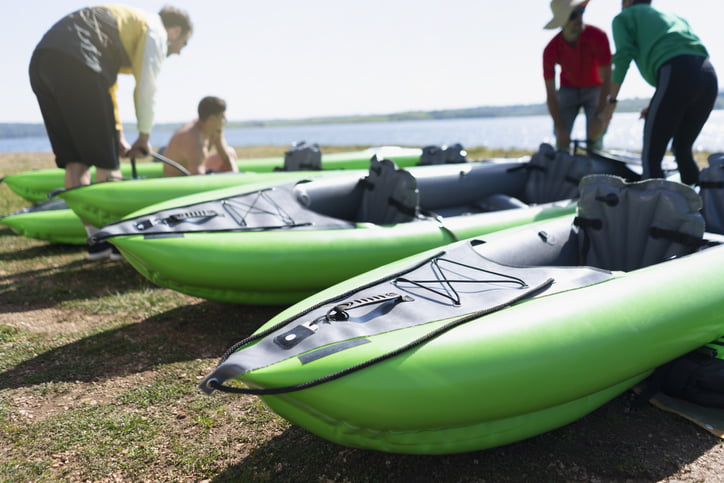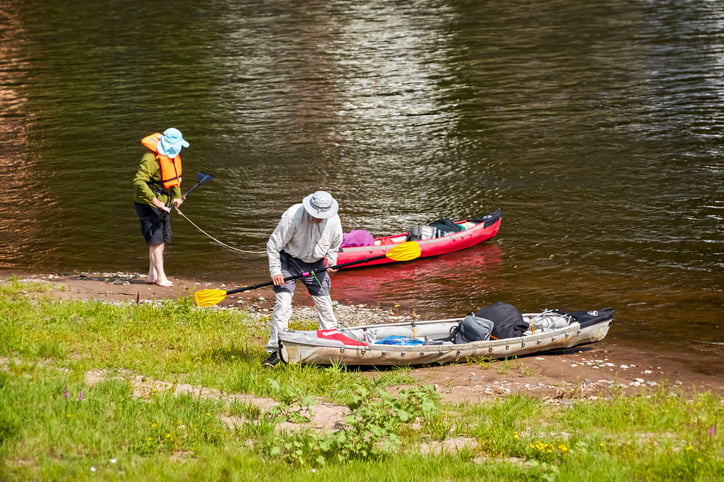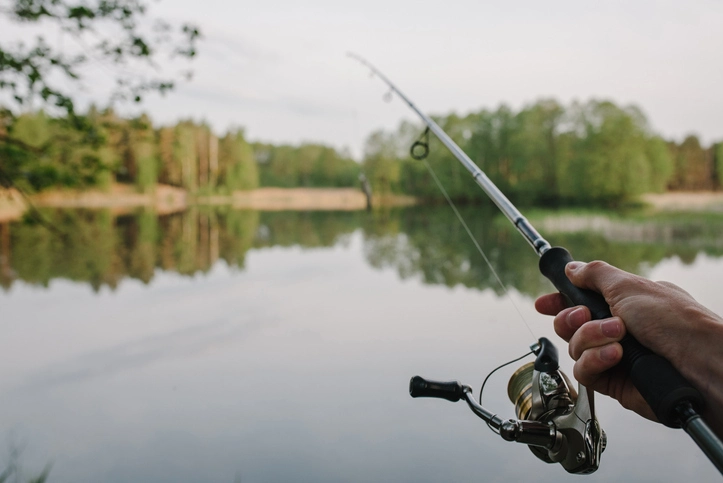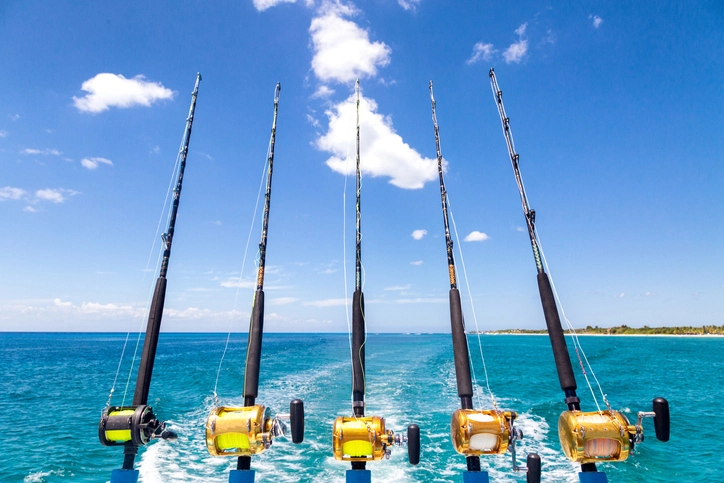(Photo from Jols | pixabay.com)
Kayak fishing has evolved into more than just a hobby; it’s a profound way for individuals to connect with nature while seeking the thrill of the catch. As our oceans face increasing pressures, it becomes imperative for enthusiasts to adopt sustainable practices. In this article, we delve into the world of sustainable kayak fishing, focusing on effective catch-and-release techniques to foster a healthy future for our marine ecosystems.
The Impact of Kayak Fishing on Marine Ecosystems
Kayak fishing, let’s acknowledge its potential impact on marine ecosystems. When not approached sustainably, this activity can have unintended consequences on marine life and habitats. The proximity to the water’s surface in kayaks allows anglers to access more secluded areas; however, this accessibility also raises concerns about potential disturbances to fragile ecosystems.
Moreover, the noise generated by kayak activities can disrupt the natural behavior of marine organisms, affecting their feeding, mating, and communication patterns. The vibrations from paddles and the presence of kayaks may inadvertently cause stress to sensitive species, influencing their overall health.
In addition, the release of chemicals, such as sunscreen and insect repellent, from kayakers into the water poses another threat. These substances can alter water quality and impact the delicate balance of marine ecosystems. Understanding these multifaceted impacts is crucial for developing comprehensive strategies to mitigate the negative effects of kayak fishing.
Understanding Catch and Release
To delve into the heart of sustainable kayak fishing, a critical aspect is understanding catch and release. This practice is not merely about catching fish and returning them to the water; it’s a conservation strategy to reduce the impact on fish populations.
Beyond the surface concept, effective catch and release extends into the intricate understanding of the physiological stress that fish endure during capture. As anglers, comprehending the impact of our actions on the fish is crucial for fostering a sense of responsibility towards the marine environment.
Moreover, recognizing that the stress experienced by fish can have long-term consequences on their health prompts anglers to adopt strategies that minimize this stress. Implementing proper catch and release techniques requires a combination of skill, knowledge, and dedication to ensuring the well-being of the fish.

Proper Equipment for Sustainable Kayak Fishing
Embarking on a journey of sustainable kayak fishing necessitates meticulous consideration of the equipment. Investing in the right gear is not just a matter of personal preference; it’s a fundamental aspect that can shape the environmental impact of the activity.
Firstly, opting for barbless hooks is a conscientious choice. These hooks minimize harm to fish by reducing the likelihood of deep hooking, making the hook removal process smoother and less stressful for the fish. The absence of barbs also facilitates quicker and gentler releases, contributing to the overall success of catch and release.
Transitioning from hooks, the type of fishing line used is another crucial consideration. Opting for biodegradable or recycled fishing lines reduces the risk of entanglement, ensuring that discarded lines don’t contribute to environmental pollution. This mindful choice aligns with the principles of sustainability, emphasizing the importance of minimizing the ecological footprint of kayak fishing.
Choosing Fishing Spots Wisely
Conscientious decision-making begins with thorough research and the selection of areas where fish abundance is prevalent. By investing time in understanding the behavior and migratory patterns of local fish species, anglers can enhance their chances of a successful and rewarding fishing experience. This strategic approach not only increases the likelihood of a fruitful catch but also contributes to the overall enjoyment of the activity.
Simultaneously, responsible anglers go beyond seeking abundant fish populations; they prioritize avoiding sensitive habitats and breeding grounds. Recognizing and respecting these critical areas showcase the environmental responsibility of anglers. By steering clear of these delicate ecosystems, anglers play a pivotal role in preserving the intricate balance of aquatic environments.
Responsible angling involves understanding the local ecosystems and adhering to guidelines that help protect sensitive areas. Local conservation organizations often provide valuable information on areas to avoid, seasonal restrictions, and guidelines for ethical fishing practices. Engaging with and supporting these organizations further solidifies the commitment to sustainable kayak fishing.
Best Practices for Catch and Release
Starting with proper handling is the cornerstone of ethical catch and release. Firstly, anglers should minimize the time the fish spends out of the water, using wet hands to handle the fish gently. This approach helps preserve the protective mucous layer on the fish’s skin, crucial for its health and protection against infections.
Moving on to quick release, it is equally vital. Prolonged exposure to air can stress the fish, affecting its ability to recover after release. By swiftly returning the fish to its aquatic environment, anglers enhance its chances of survival, promoting a sustainable approach to the sport.
Minimizing stress on the fish requires a holistic understanding of its biology and behavior. This involves using appropriate tackle and techniques to reduce fight time. Importantly, an exhausted fish is more susceptible to predators and less likely to survive post-release. Responsible anglers prioritize the well-being of the fish by minimizing the stress induced during the catching process.
Moreover, embracing catch and release as a conservation tool aligns with the evolving ethos of ethical angling. It reflects an awareness of the interconnectedness between angler actions and the health of aquatic ecosystems. By mastering these techniques, anglers not only enjoy the thrill of the catch but actively participate in the preservation of marine life for future generations.
Handling the Catch with Care
First and foremost, minimizing the time the fish spends out of the water is crucial. By swiftly returning the fish to its aquatic environment, anglers help reduce the stress that can accompany prolonged exposure to air. This swift action aligns with the broader principles of ethical angling, emphasizing the importance of a quick and considerate release.
In addition, using wet hands to handle the fish is a simple yet effective practice. Wet hands prevent the removal of the fish’s protective mucous layer, which serves as a crucial barrier against infections. This small but significant detail showcases an understanding of the fragility of fish and a commitment to preserving their health during the catch and release process.
Furthermore, avoiding squeezing the fish tightly is a practice rooted in respect for its delicate nature. Squeezing can cause injury and damage to the fish’s internal organs, potentially jeopardizing its chances of survival post-release. By treating the fish with care and avoiding unnecessary pressure, anglers contribute to the overall sustainability of the fishing experience.
Utilizing Circle Hooks
In the realm of hooks, circle hooks play a vital role. Designed to hook the fish in the corner of the mouth, they reduce the risk of deep hooking and make it easier to release the fish without causing harm. Their unique design not only aids in effective catch and release but also exemplifies how choosing the right fishing gear can align with conservation goals.
Minimizing Fight Time
As we transition to the dynamics of the catch, prolonged fights can exhaust the fish, making it more susceptible to predators or less likely to survive after release. Using appropriate tackle and techniques can help minimize fight time. Responsible anglers strike a balance between enjoying the thrill of the catch and ensuring the well-being of the fish by swiftly and efficiently bringing them to the kayak.
Techniques for Hook Removal
Shifting the focus to the intricacies of hook removal, proper techniques are crucial for the fish’s well-being. Anglers should carry specialized tools like long-nose pliers to safely remove hooks, minimizing the risk of injury to the fish. Acquiring the skills to swiftly and efficiently remove hooks demonstrates a commitment to ethical angling practices.
Practicing Safe Release
Furthermore, as we conclude our exploration of catch and release, the safe release of the fish is the culmination of these efforts. Gently guiding the fish back into the water, ensuring it has fully recovered before swimming away, showcases the responsibility of anglers. Observing the fish as it swims away provides a sense of accomplishment, knowing that the creature has been given a second chance at life.
Monitoring Fish Behavior Post-Release
Observing the behavior of released fish helps determine if they recover successfully. If a fish appears lethargic or struggles to swim away, providing additional support until it regains strength may be necessary. Additionally, responsible anglers go the extra mile by ensuring that the released fish has every opportunity to reintegrate into its natural environment successfully.

Educating Fellow Kayak Anglers
Spreading awareness about sustainable practices is crucial for the wider kayak fishing community. Educate fellow anglers about the importance of catch and release and share tips for minimizing environmental impact. Cultivating a community of environmentally conscious anglers creates a ripple effect, fostering a culture of sustainability within the kayak fishing community.
Participating in Conservation Efforts
Beyond individual practices, engaging in conservation initiatives and supporting organizations dedicated to preserving aquatic ecosystems can amplify the impact of sustainable kayak fishing. Contributing time or resources to conservation projects demonstrates a commitment to the long-term health of marine environments, ensuring they remain thriving for future generations.
In conclusion, sustainable kayak fishing is not just a choice; it’s a responsibility that every enthusiast should embrace. By adopting catch-and-release practices and promoting awareness within the community, we can contribute to the conservation of our precious marine environments. Let’s ensure that the joy of kayak fishing coexists harmoniously with the well-being of the ecosystems that make it all possible. Through mindful practices and shared knowledge, we can create a legacy of responsible kayak fishing for generations to come.
10 quick tips for handling the catch with care in kayak fishing:
- Swift Return: Minimize the time the fish spends out of the water for a quick and stress-free release.
- Wet Hands: Always use wet hands when handling the fish to preserve its protective mucous layer.
- Gentle Touch: Avoid squeezing the fish tightly to prevent injuries and internal damage.
- Proper Gripping: Hold the fish gently without applying excessive pressure to maintain its natural form.
- Avoid Dropping: Handle the fish over the water to prevent accidental drops, ensuring a safe return.
- Barbless Hooks: Opt for barbless hooks to make hook removal smoother and less stressful for the fish.
- Use Pliers: Carry long-nose pliers for efficient hook removal, minimizing the risk of injury to the fish.
- Mindful Unhooking: Remove hooks carefully to avoid causing additional stress or harm to the fish.
- Observation Post-Release: Watch the fish swim away to ensure it recovers fully before continuing its journey.
- Educate Fellow Anglers: Share these tips with other kayak anglers to promote responsible catch and release practices.
Additional Resources:
1. Intricacies of hook removal – https://www.msdmanuals.com/professional/injuries-poisoning/how-to-do-skin,-soft-tissue,-and-minor-surgical-procedures/how-to-remove-a-shallow-fishhook
2. Fish’s protective mucous layer – https://www.ncbi.nlm.nih.gov/pmc/articles/PMC6056142/#:~:text=The%20fish%20skin%20mucus%20provides,water%2C%20etc%20known%20as%20mucins.
3. Type of fishing line – https://www.academy.com/expert-advice/fishing-line-types
4. Sustainable kayak – https://www.thewarehousegroup.co.nz/news-updates/torpedo7-launch-worlds-first-sustainable-kayak-made-wool
5. Sensitive habitats and breeding grounds – https://reefresilience.org/management-strategies/aquaculture/environmental-impacts-and-benefits/habitat/


